Kryptos Spy Art: How the CIA’s Sculptor Teased the World’s Top Brains
An interview with Kryptos creator Jim Sanborn from 2009 may offer clues to the solution of his yet-to-be solved CIA sculpture challenge.
Jim Sanborn grew up reading John le Carré novels in a family that rubbed shoulders with spies so when the CIA asked Sanborn if he’d like to create a sculpture for their HQ in 1988 it was a ‘no brainer’.
The CIA wanted the artwork to reflect its mission - collecting secrets - so Sanborn decided to play mind games with the CIA and its code-cracking sister agency the NSA. Sanborn spent months studying code and used retired CIA cryptographer Edward M. Scheid as a consultant. “Ed and I met at secret locations because Ed could never trust his telephone,” Sanborn recalled.
More than 30 years later, Sanborn’s mysterious code still hasn’t been broken. While the first three of the four Kryptos panels have been deciphered, the last panel has defeated the world’s brightest minds - although cryptologist Elonka Dunin isn’t ready to give up just yet.
Sanborn has dropped maddening clues over the decades (see below) but fiendishly refuses to reveal any more, so SPYSCAPE pounced when we found a 70-page transcript of a 2009 Sanborn interview in which he discusses the history of Kryptos. Surely, this must be the Holy Grail...
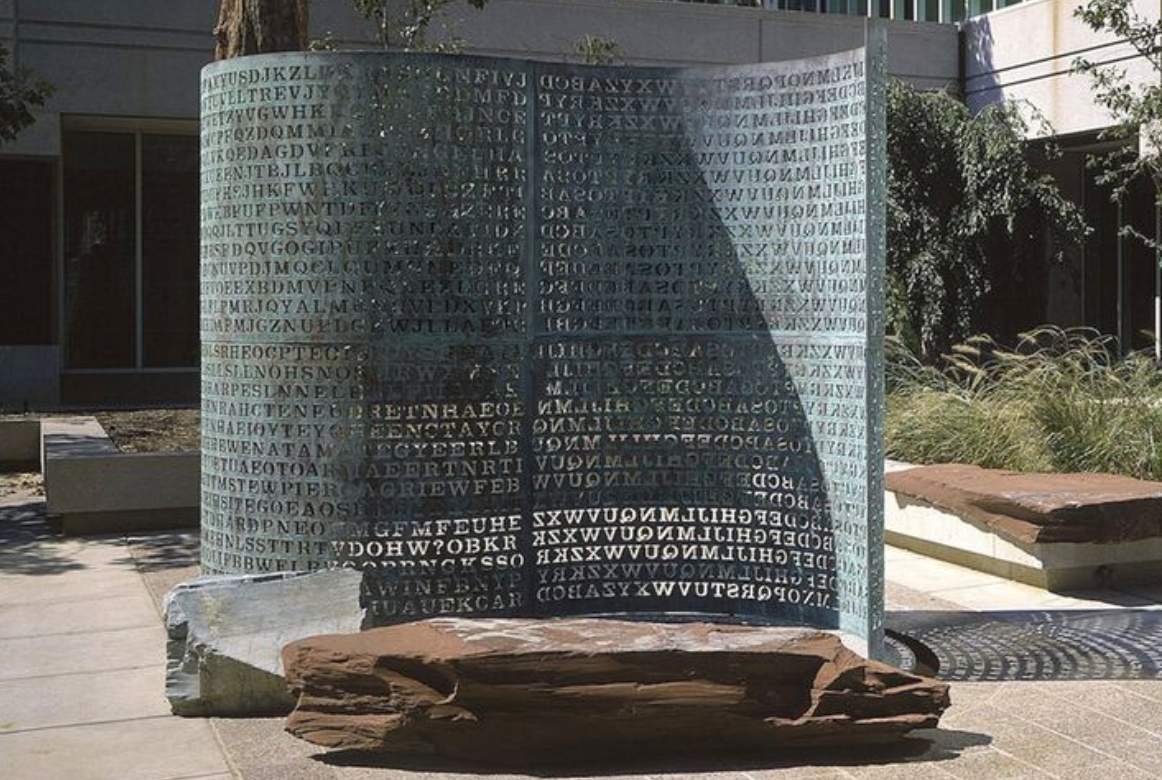
Cracking the Kryptos code
First, a quick recap. Here's what Jim Sanborn said on November 3, 1990, the day Kryptos was dedicated: "The tilted strata tell a story like pages of a document. Inserted between these stone pages is a flat copper sheet through which letters and symbols have been cut. This code, which includes certain ancient ciphers, begins as international Morse, and increases in complexity as you move through the piece at the entrance and into the courtyard. Its placement in a geologic context reinforces the text's hiddenness as if it were a fossil, frozen in time."
The first three panels have been cracked by the CIA and NSA, helped along the way by obsessed codebreakers, academics, computer programmers, doctors, online Kryptos clubs, and amateur spies.
Here’s the NSA’s solution to K1, K2, and K3 to get you in the right frame of mind to solve K4.
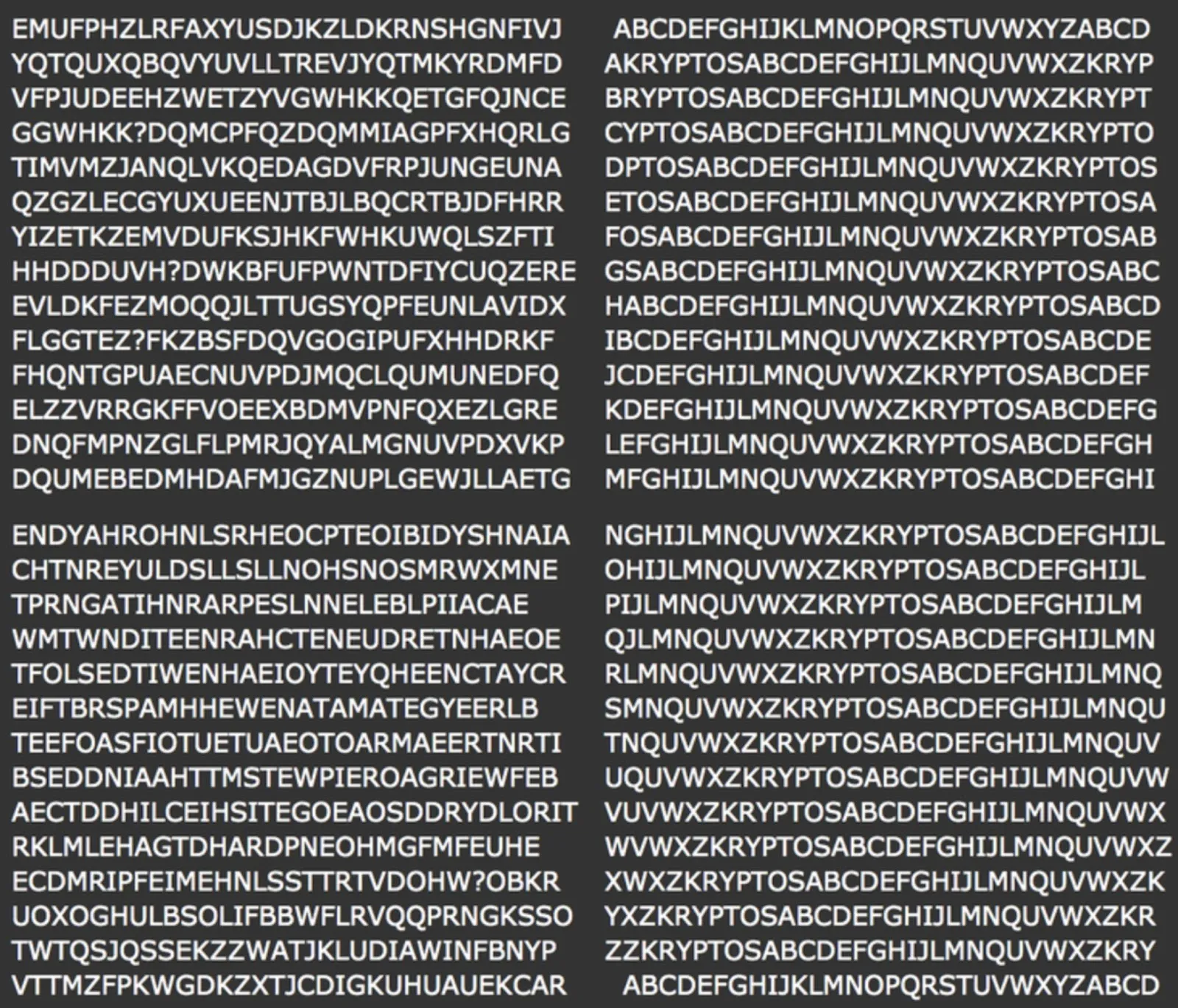
Kryptos, Sanborn, the CIA spies & the cryptic backstory
SPYSCAPE dug into Sanborn’s backstory and early influences, hunting for clues to help unravel the Kryptos challenge. Sanborn, born in 1945, grew up in Washington, D.C. where his father, also an artist, worked as the head of exhibitions at the Library of Congress.
Jim led a surreal and secretive life influenced by literature, architecture, archeology, and the Library of Congress which was his playground and study hall. He recalled once handling the Dead Sea Scrolls and another incident where his father was handcuffed to the Gutenberg Bible when the library transferred it from D.C. to a display in New York.
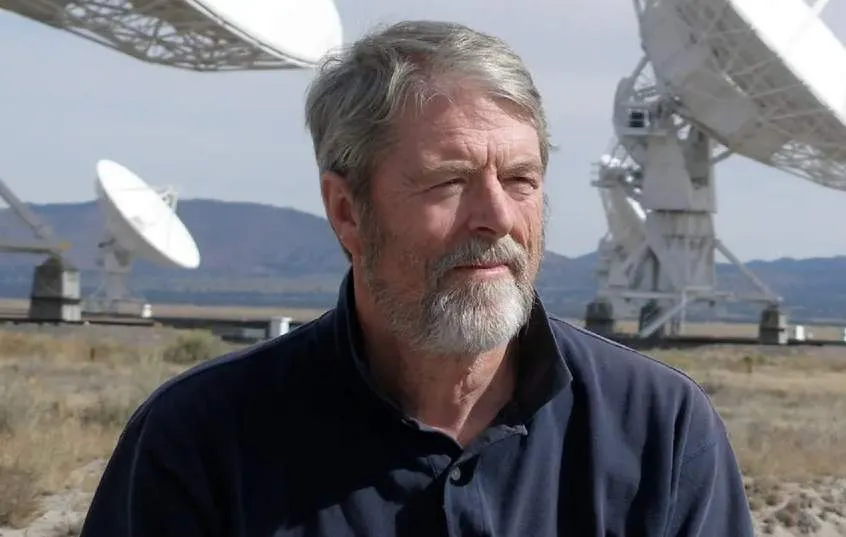
Architecture & archeology
Jim was already six feet tall at the age of 13 and would grow to 6’ 7”, learning to admire Frank Lloyd Wright’s architecture and furniture designs that could accommodate his large frame. ”All I know is that my size and strength assisted me in my belief that I could make or build anything that I wanted to make or build.”
One of Sanborn’s favorite texts was Howard Carter's notebooks describing the opening of King Tut's tomb, referred to in the third Kryptos panels. Another influence was Memoirs of Heinrich Schliemann of which Sanborn has an original copy from the late 1800s. Schliemann was a German pioneer in the field of archeology.
“And those giant excavations and amazing discoveries of cultures really profoundly - profoundly - interested me… I mean, excavating and finding something that's been hidden for millennia is a very exciting thing. And whether it's an arrowhead, a simple arrowhead in a field, or whether it's an entire tomb that's been out of view for millennia, it's a wonderful thing to discover something that nobody's seen before and that you can actually… tangible evidence of the past.”
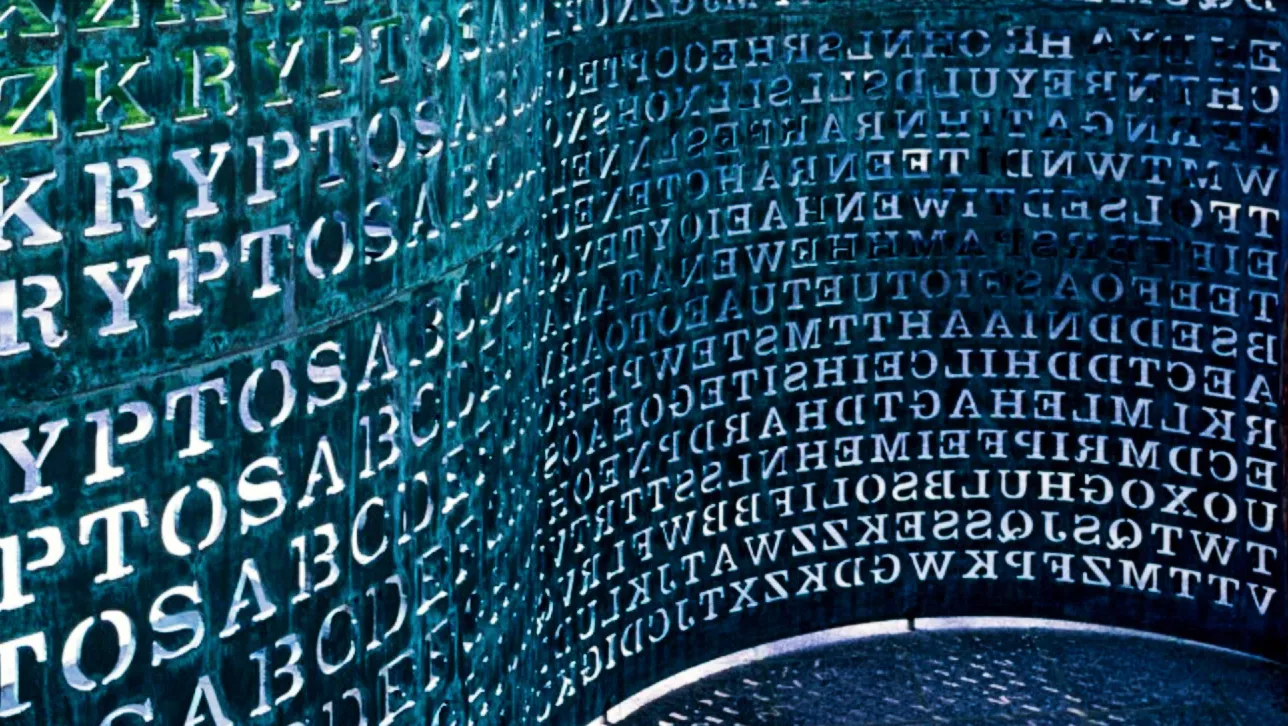
"The brand new social experience where you activate your gaming skills as you train like a spy."
- TimeOut
Take on thrilling, high-energy espionage challenges across different game zones.

Kryptos influences: Native American codebreakers & Dead Sea Scrolls
Discussing his influences, Sanborn said he is fascinated by life before the 15th and 16th centuries and also with Native American ‘situations’. He’s used four or five different Native American languages in his art. (As SPYSCAPE readers may recall, the US recruited several hundred Native Americans to translate English words into the Navajo language to use as a WWII military code - the only military code, in modern history, never broken by an enemy.)
“And then, of course, the Dead Sea Scrolls, which were again something lost, then found. These objects being hidden and then found are fascinating to me,” Sanborn said. “They also link together with the nature thing, which is where I was able to - if I were to do something that involved magnetism and the earth's magnetic field, the earth's magnetic field is invisible; and so I basically would work with compasses or lodestones in some way to visualize that field.
“So in nature, and also by making a geological tableau, I more or less took up out of the ground and put on display the wonders of what nature was able to do. So again, it was more or less an excavation in geology, a geological sort of excavation, and it presented something that had been hidden from view in geological terms for millions of years.”
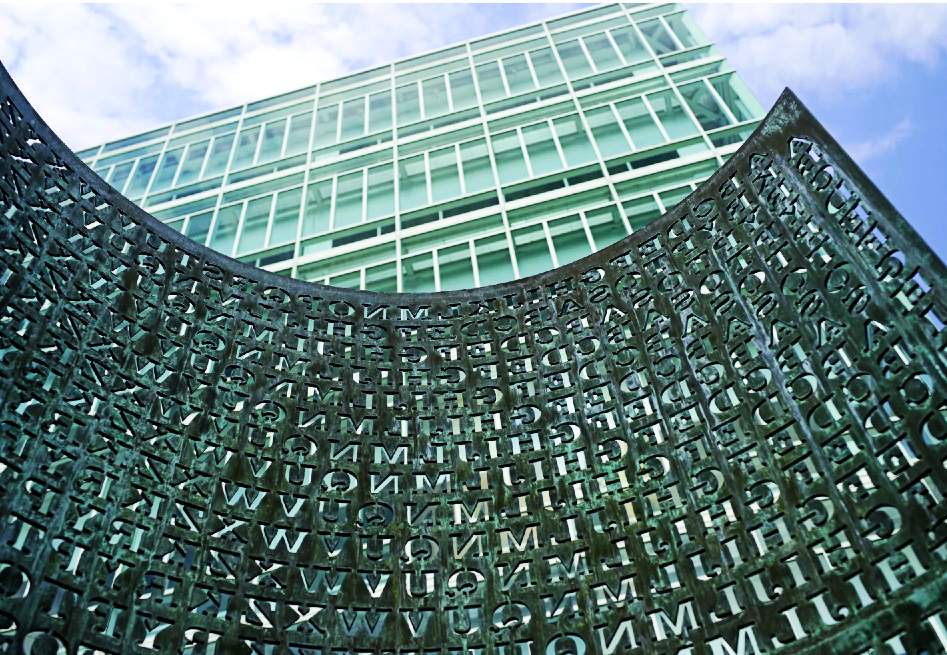
Do Sanborn’s Kryptos assistants hold any clues?
When the CIA called, Sanborn happily accepted the $250,000 commission and had a year to prepare his first Kryptos model. “From the very beginning it included this component of an encoded text,” he said. “In doing Kryptos, I brought up this hidden/not hidden thing when I wrote the plain text for Kryptos. You know, I included an entry of Howard Carter's discovery of the tomb. And also other writing that I composed that related to mysteries as yet undiscovered.”
Sanborn worked closely with typographer Buddy Harris. “And then we had to stencilize it so that I could cut something through without having the letters, the centers of the zeroes, fall out.”
It took two-and-a-half years, five days a week, 52 weeks a year to cut out the letters. By the time Kryptos was finished, Sanborn had burned through 15 assistants, 900 jigsaw blades, and 12 Bosch jigsaws. “Most of the assistants lasted only a week or two,” Sanborn said. “They started dreaming about cutting letters.”
US sculptor and assistant Dave Sheldon completed about half of the cutting work on Kryptos, however. While Sheldon cut, Sanborn wrote the plain text for the code.
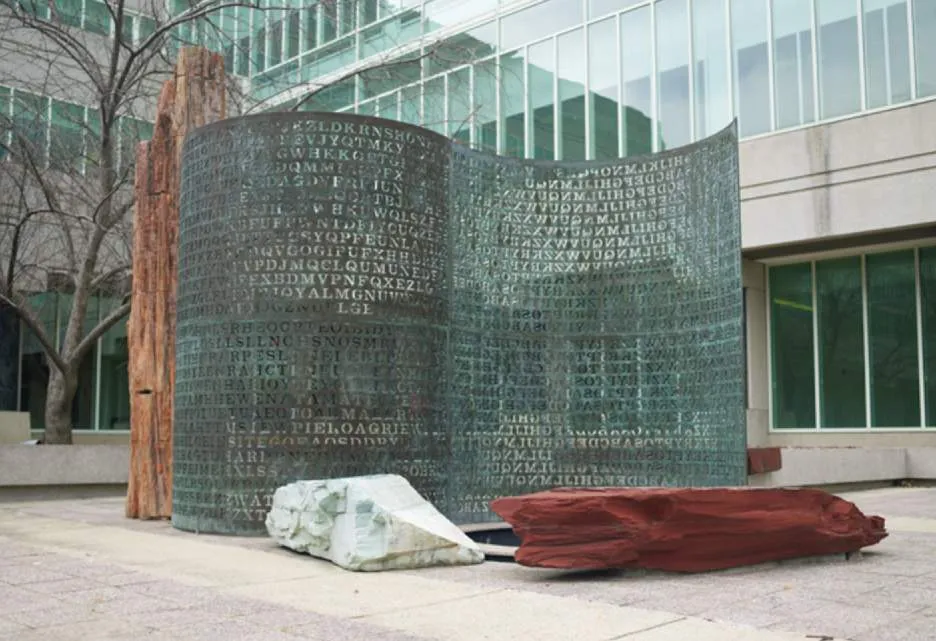
Spy vs Spy
The creation of the Kryptos code was shrouded in secrecy. “Originally I wanted to use somebody like John le Carré,” Sanborn said. “Sent a letter to his publisher, never got a response. So in the end, it ended up much better when I did it myself because then fewer people would know what it said.”
Sanborn didn’t want to invent a cipher based on ancient codes that had already been cracked so he turned to Ed Scheid, a CIA veteran who’d retired from the cryptography section to open his own technical security company.
“I knew that my phone was probably being tapped by somebody because I knew I was being watched because people were getting on ladders trying to look in my studio,” Sanborn said. “We suspected it was NSA employees trying to one-up the CIA or CIA people trying to find out what the code was so that they could crack it almost before it hit the ground.”

Kryptos & The Cyrillic Projector
Some detectives have carefully studied Sanborn's other sculptures for clues including The Cyrillic Projector located in Charlotte, North Carolina. Created after Kryptos, The Cyrillic Projector is another cryptographic sculpture and its code has been cracked by an international group of cryptographers. Sanborn's website lists 20 sculptures related to Kryptos.
In addition to professional codebreakers, Sanborn has endured decades of amateurs asking for more clues or offering their solutions. He still reviews dozens of possible 'solutions' each week, so he set up a new system a few years ago. Codebreakers who think they’ve solved Kryptos can send him their guess via email (kryptos@earthlink.net) along with $50 through PayPal and Sanborn will send a reply telling you if you’re right or wrong. If nothing else, you’ll have an exceptional story to tell your friends.
Sanborn has repeatedly said he won't reveal any more clues, but perhaps he'd like to offer SPYSCAPE readers a bit of advice? "I get that question a lot, weekly, even after 30+ years," Jim Sanborn said. "My answer is that the answer to that question is equivalent to a clue and I don’t give clues…….. ah! Yes, Work Harder!"
SPYSCAPE+

Join now to get True Spies episodes early and ad-free every week, plus subscriber-only Debriefs and Q&As to bring you closer to your favorite spies and stories from the show. You’ll also get our exclusive series The Razumov Files and The Great James Bond Car Robbery!


Gadgets & Gifts
Explore a world of secrets together. Navigate through interactive exhibits and missions to discover your spy roles.
Your Spy Skills
We all have valuable spy skills - your mission is to discover yours. See if you have what it takes to be a secret agent, with our authentic spy skills evaluation* developed by a former Head of Training at British Intelligence. It's FREE so share & compare with friends now!
* Find more information about the scientific methods behind the evaluation here.


Stay Connected
Follow us for the latest
TIKTOK
INSTAGRAM
X
FACEBOOK
YOUTUBE